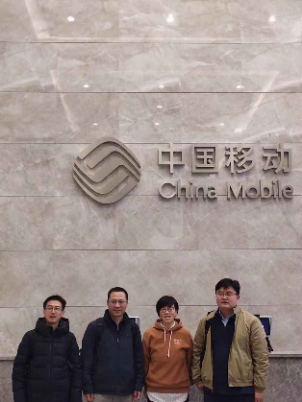On January 7, 2020, as the head of the Laboratory for Ultra-Complex Network Science and Intelligent Systems, Professor Dingding Han attended the V2X Platform Data Open Interface Seminar hosted by China Mobile Wuxi Branch. The seminar was co-organized by Fudan University, East China Normal University, Beidou Aerospace Satellite Technology Application Company, the Shanghai Institute of Microsystem and Information Technology of the Chinese Academy of Sciences, and Northwestern Polytechnical University, among others.
The seminar primarily focused on data requirements and application processes, aiming to develop a systematic approach to analyzing historical data from the Internet of Vehicles (IoV). This system would then be hosted on the OneNet platform to facilitate project implementation.
Professor Han delivered a report on data requirements, outlining a technical roadmap for data utilization involving data processing, model construction, and data-driven analysis. She divided her presentation into two main parts: complex network modeling and network feature analysis and implementation.
In the network feature analysis and implementation section, Professor Han detailed topics such as road traffic and incident mining, shortest path analysis, community detection, network temporal characteristics, influence maximization, effects of different time scales, network node relationship modeling, and real-time decision support systems. She highlighted the real-time decision support system's ability to predict road traffic by constructing models that integrate road networks and traffic features, optimizing these models based on historical data. The presentation concluded with demonstrations of an implemented visualization platform and a city emergency response mixed-reality (MR) system.

Subsequently, China Mobile provided an interpretation of the data requirements, categorizing the data into three parts:
1. Weather and temperature data, road network topology information, including road network topology, vehicle data sampling, traffic light information, and vehicle positioning data.
2. Mobile base station information, primarily for mining semantic text and embedding it into the visualization system.
3. Information on emergencies during special periods, which is more difficult to obtain.
The seminar successfully met its expected goals, allowing participating universities and organizations to deepen communication and further refine the specific tasks corresponding to the project objectives.

